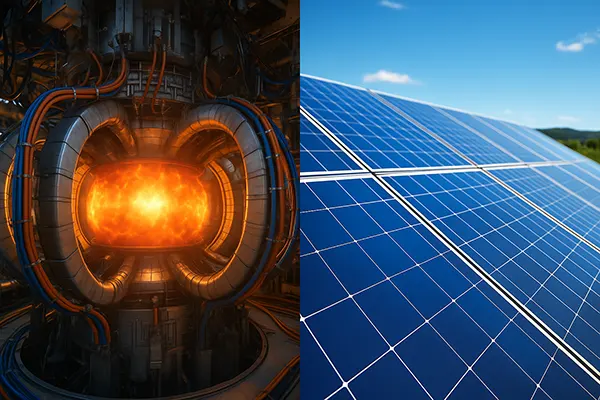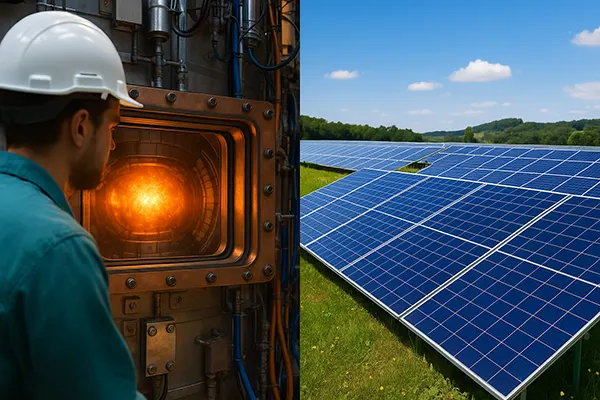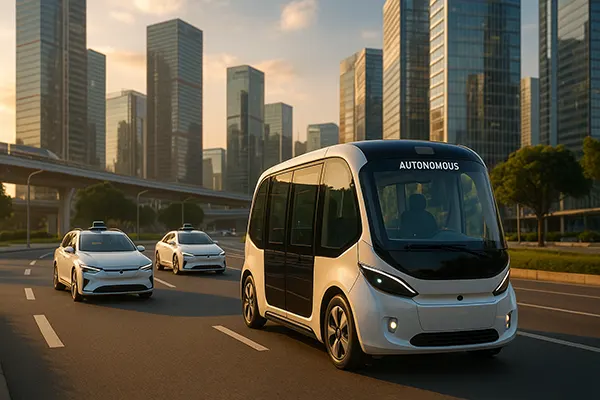
Next-Generation Green Energy: Fusion Reactors and “Solar Film Panels”
In 2025, the global energy landscape is undergoing a fundamental transformation. Climate targets, environmental concerns, and technological advancements are driving nations and companies to explore new, sustainable ways of producing electricity. Two of the most promising innovations are nuclear fusion reactors and flexible solar film panels — both representing the next phase in clean energy evolution.
The Dawn of Fusion Energy
Fusion energy, often referred to as the “holy grail” of clean power, is closer than ever to becoming a commercial reality. Unlike conventional nuclear fission, which splits atoms and generates long-lived radioactive waste, fusion merges light atomic nuclei, typically isotopes of hydrogen, to release vast amounts of energy with minimal environmental footprint.
As of 2025, international projects such as ITER in France and SPARC in the United States have achieved major milestones in sustaining plasma at temperatures exceeding 100 million degrees Celsius. These developments mark a turning point, demonstrating that stable fusion reactions can be maintained long enough to produce net-positive energy.
Private companies, including Commonwealth Fusion Systems and Tokamak Energy, are accelerating innovation by using high-temperature superconducting magnets to reduce costs and increase efficiency. This shift from theory to practical engineering brings humanity closer to an era of limitless, clean power.
Engineering and Safety in Fusion Reactors
Modern fusion reactors incorporate advanced containment systems that rely on magnetic confinement to hold plasma safely away from reactor walls. This approach eliminates the risk of meltdown, a concern often associated with traditional nuclear plants. Furthermore, fusion does not produce large volumes of hazardous waste; the primary by-product is helium — an inert and harmless gas.
New materials developed for reactor chambers, such as tungsten alloys and self-healing ceramics, can withstand the extreme heat and radiation generated during operation. These materials ensure both durability and efficiency, extending the life span of reactor components.
Safety systems are also supported by artificial intelligence, allowing for real-time monitoring and automated shutdown in case of anomalies. This integration of smart technology enhances operational stability and public confidence in fusion power.
Revolution in Solar Energy: Film-Based Photovoltaics
While fusion reactors represent large-scale infrastructure, solar film panels offer a decentralised and flexible approach to renewable power. These ultra-thin photovoltaic layers can be applied to various surfaces, including windows, walls, and even vehicles, converting sunlight into electricity without the need for bulky equipment.
In 2025, perovskite-based solar films have surpassed 30% energy conversion efficiency in laboratory conditions, rivalling and even outperforming traditional silicon panels. Their ability to be printed on flexible substrates has opened opportunities for low-cost mass production and urban integration.
European startups, particularly in Germany, Denmark, and the UK, are leading this innovation, combining aesthetics with sustainability. Transparent solar coatings on skyscrapers and smart home windows are becoming a key component of the green urban revolution.
Advantages and Applications of Solar Film Panels
Solar film panels are lightweight, easy to install, and adaptable to various environments, from residential rooftops to commercial façades. Their portability makes them ideal for off-grid communities and developing regions where traditional infrastructure is limited.
Another advantage lies in their recyclability. Many new-generation solar films use eco-friendly materials that can be reused or reprocessed, reducing electronic waste. This aligns with the European Union’s Green Deal objectives for a circular economy.
Moreover, film technology allows energy harvesting even in low-light or shaded conditions. This means greater stability in electricity generation throughout the day, addressing one of the key limitations of conventional solar systems.

Integration and Future Prospects
The synergy between fusion power and solar film technology represents a holistic path toward sustainable energy independence. While fusion reactors will provide stable baseload energy, solar films will enable distributed generation, allowing consumers to produce and manage electricity locally.
Governments are already supporting hybrid grids that combine renewable sources with energy storage solutions. Advances in solid-state batteries and hydrogen storage are critical to ensuring that clean energy remains accessible even during low production periods.
Experts predict that by 2040, the combined impact of these technologies could eliminate the world’s reliance on fossil fuels, drastically reducing carbon emissions and stabilising global energy prices.
The Role of Policy and Global Collaboration
International cooperation is essential for scaling these innovations. Public-private partnerships, research funding, and open scientific collaboration have already accelerated breakthroughs in both fusion and solar technologies. The ITER consortium and global climate frameworks are examples of this cooperative momentum.
Policy initiatives such as the European Green Deal and the US Inflation Reduction Act continue to provide incentives for renewable energy adoption and innovation. Such measures encourage investment and ensure long-term economic sustainability of the green sector.
Ultimately, achieving a zero-carbon future will depend on balancing large-scale infrastructure with accessible, decentralised solutions — and fusion reactors together with solar film panels offer precisely that harmony.



